One of Ross County’s most lethal finishers will never forget his best goal – for its quality and what it led to.
Brian Grant is the latest cult hero in The Press and Journal series, and he comes hot on the heels of his team-mate from the 1990s, Billy Ferries.
Grant played just over 200 times for the Dingwall side, scoring 155 goals, which puts him third in the all-time scoring chart for the club behind Alan Duff (231) and Chic Ogilvie (184).
In our recent article, Billy Ferries spoke about the-then Highland League big-hitters pulling off famous Scottish Cup wins over established clubs Queen of the South and Forfar.
It is a long-held view that triumphs such as those went a long way to helping Bobby Wilson’s team earn entry into the Scottish Football League (SFL) in 1994 with neighbours Caley Thistle. Wilson said so himself.
The win at Forfar was followed just days later by their election from the Highland League to the SFL.
Their path into the Scottish Cup used to be earned by being at least a semi-finalist in the Scottish (North) Qualifying Cup.
In 1993-94, their quarter-final at home to Keith was not going to plan for them as, reduced to 10 men, they were under pressure and locked at 1-1.
Up stepped Grant to score a goal of sheer quality and take County into the semis and secure their place in that season’s Scottish Cup.
They also won the Qualifying Cup by beating Huntly 2-1 after extra-time in the final at Borough Briggs in Elgin.
Winner against Keith ‘so pivotal’
Speaking about that goal against Keith which meant more to Grant than just edging into the last four, he said: “It was 1-1, we had 10 men and Keith were dominating.
“It was a real possibility we were not going to make the Scottish Cup. Then I scored my best goal to win the tie 2-1.
“It was such an important goal, which came right out of the blue. So, it wasn’t my goals against Forfar or Queen of the South I most remember – the one against Keith was so pivotal.
“We were hanging on in the game, and I rarely scored with my left foot, but I chipped the keeper to score.
“It was just like any normal Highland League game, but our win was so important as it got us through to the Scottish Cup.”
Hat-trick at Forfar created cup buzz
Few Ross County followers of that time will forget the 1993-94 Scottish Cup and not just for their 11-0 home rout of Galloway side St Cuthbert Wanderers, which still stands as the club’s record victory.
In the second-round tie at Station Park, County posted a notable 4-0 win over Division Two hosts Forfar Athletic.
Grant steered home the opener, set up Barry Wilson for the second goal, then tucked away another goal before chipping home a cracker for a dazzling hat-trick.
In round three, they lost 2-0 at Alloa Athletic but bowed out having served a fresh reminder to national watchers that County were a capable club and team on the rise.
Grant says the adventure was packed with drama and interest was through the roof.
He said: “There was a lot of publicity in the Scottish Cup, and it was such good fun for us to be involved in a tie such as the one at Forfar.
“They had players like Bobby Mann and David Bingham (then future-ICT stars) in their team. They had just beaten Queen of the South 8-3 in the previous round, so they were flying at the time.
“But we were a good team too and we more than held our own with that performance and result.”
‘Gobsmacked’ after sinking Queens
Three years before that, County opened eyes in spectacular fashion in the Scottish Cup second round.
After drawing 2-2 with Second Division side Queen of the South at Victoria Park, aided by another Grant treble, they roared to a sensational 6-2 victory at Dumfries in the replay before Meadowbank Thistle ended their run in the second stage.
Grant recalls the feeling of knocking out a higher ranked team in such style.
He said: “The replay at Queen of the South was on a Monday night and that was such a big scalp.
“They were a good side, with (ex-Celtic and St Mirren striker) Frank McGarvey in charge.
“They got out of Dingwall with a 2-2 draw, but we put six past them down there. We had such confident characters in our team.
“It was pretty strange. Afterwards, we sat in the dressing room going ‘what happened?’ We’re all just gobsmacked. That was a good night.”
Wilson secured Grant’s north return
Having played for the County reserves as a younger player, he had a crack of success at top-flight Dundee, where Bobby Wilson made his name as a Dark Blues star.
When Wilson was the manager at County, he made his move to bring Grant back to the Highlands.
Grant said: “I’m a local boy from Inverness and I always used to go watch Ross County, and went on to play for the second team.
“I actually left to go to Dundee to try to make it as a full-time footballer. It didn’t work out for a couple of reasons and in 1991 Bobby Wilson came down to Dundee and said: ‘fancy coming back up to Ross County?’ It was the best decision for a couple of reasons.
“One, we moved to Evanton from Dundee, and also my wife Sharon and I got married that year. She packed up and left and came up with me, so it was a big commitment, and I got a job at Nigg (oil fabrication yard).
“It was great on that personal front, going back home as well to see my mum and dad.
“It was such a great time. I was kind of the last piece in the jigsaw in a great team.
“I was just lucky that I joined the team that went on to win four or five cups. We won two (Highland) league titles and had these amazing runs in the Scottish Cup.
Scoring ‘was easy. I just got the credit for my team-mates’ hard work’.
“We had Billy Ferries on one side and Barry Wilson on the other and guys like Gordon Connelly and Cammy Robertson, just too many to mention, and I was just always trying to put the ball in the net.
“It was easy. I just got the credit for their hard work.
“I scored 155 goals for County, with 26 of those in the Scottish League (Third Division). I’d say I played probably around 200 games overall.
“Scoring always interested me – that’s what I played for. Even if I played badly, as long as I scored that’s all the mattered.”
‘Prolific’ winners of trophies
Those early days as a key player for County meant much to Grant as County won the HFL titles before finishing fifth and third respectively before joining the SFL.
It was a special period to be a County player, surrounding by talented team-mates.
He said: “It’s good to think back to those good nights such as playing Caley under the lights at Telford Street or in Dingwall. There were probably around 5,000 people at those Highland League games.
“You hear people speak about the Ross County team from the 1960s and then they speak about our team from 1991-92, we had such special times.
“It was all timed perfectly for going into the Scottish Leagues (in 1994). Billy Ferries had come back to County, I had joined, and we had a great group of boys.
“We were such prolific winners of trophies including the North of Scotland and Scottish Qualifying Cup.”
County won promotion from the Third Division after Grant’s time there, but he felt their debut year of 1994 at that level could have been an instant success by going into Division Two.
He said: “When we went into the Third Division, we finished third in our first season (behind Forfar and Montrose).
“I felt we should have got promoted that season, although there was a feeling that maybe it was too soon, we maybe needed to find our feet in the division.
“We did finish above (sixth-placed) Caley Thistle though – we still had the rivalry. It was good to play in the other grounds.
“I had moved to the Central Belt by then, so for me it was okay, although a couple of the boys didn’t want to do it. It was progression that needed to happen for Ross County.”
Won Third Division with Arbroath
When Nigg closed down in the late 1990s, Grant and his wife moved to Laurencekirk to work for an oil company in Aberdeen, for whom he still works while now living in Dundee.
He commuted from Laurencekirk to play for County, and he admits that period was tougher than when he lived in the Highlands.
The travel and training commitments led to him signing for Arbroath, who he was with as they pipped Ross County to promotion from the Third Division in 1998 as runners-up to champions Alloa Athletic on the last day of the season.
Smiling as goals rained in at Dundee
These days, Grant watches County when he can and often makes the return home to do so.
This season, a 3-0 win at Dundee ended a 15-month wait for a Staggies’ league victory on their travels.
Grant was in the Dens Park stand as goals from Noah Chilvers and Josh Nisbet and a Jordan White penalty sealed a result which was soon followed by away wins at Aberdeen, Kilmarnock and Motherwell.
Grant, who described watching County compete in the 2010 Scottish Cup final as “surreal” when they lost to Dundee United, paid credit to Don Cowie, whose dad was assistant boss when he was playing.
He said: “I still get to some County games and saw them win here at Dundee on Boxing Day. As a former Dundee and County player, it was a brilliant day.
“I was sitting in the Dundee end with a smile as the goals went in. They were brilliant that day.
“Don Cowie is doing a great job. His father, Don senior, was assistant manager to Bobby Wilson when I was a player.
“He was such a motivator; he would always tell me I’d score. Don was great with all the players.”
‘We laid the foundations as a team and Roy MacGregor built upon it’
County have spent just one season outside the Premiership since Derek Adams guided them there in 2012.
And Grant highlighted how long-time chairman Roy MacGregor got the ball rolling for an upward rise when he was still at Dingwall.
He said: “Roy MacGregor came on board when I was there as well and, of course, he became chairman. He always said he had a vision for Ross County once we had just joined the Scottish league.
“We laid the foundation as a team and Roy, with his vision, built upon it.
“I think back to when I lived in Dundee before joining Ross County, few people had heard of the club from the Highland League. Well now, everyone knows Ross County.
“When I left, the main stands had been built. When I started in 1991, we had a wooden hut with one shower between 13 of us, so we had nothing. We were all fighting over the shower.”
Other Ross County Cult Heroes…
- Billy Ferries on three-stint Staggies career – and defying managers’ instructions to thrill fans
- Karim Boukraa on how Lubomir Moravcik and Eric Black helped set up ‘amazing’ 18-month spell in Dingwall
- Kenny Gilbert on playing on with sight in one eye for his ‘hero’ Neale Cooper
- Steven McGarry on Australian success – and nearly joining Caley Thistle
- Neil Tarrant on his big-money Aston Villa move after scoring for fun in the Highlands
- Steffen Wohlfarth on flooring Celtic, his Eric Cantona celebration and his love of Scottish football
For more Ross County news and updates visit our dedicated page and join our Facebook group.

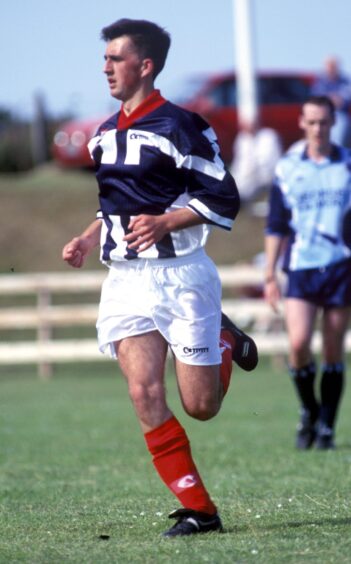
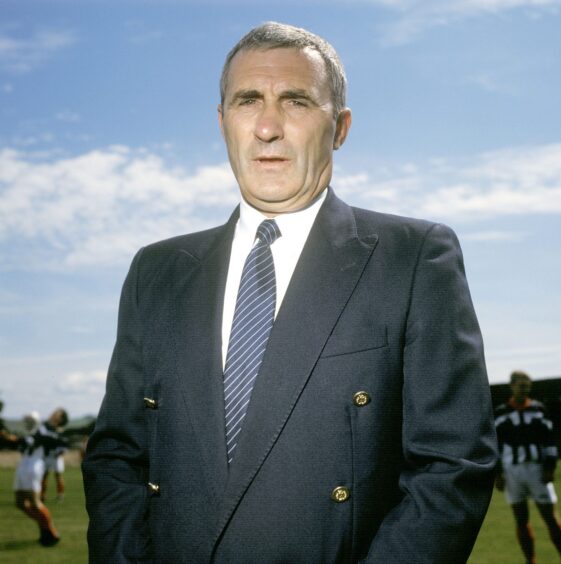
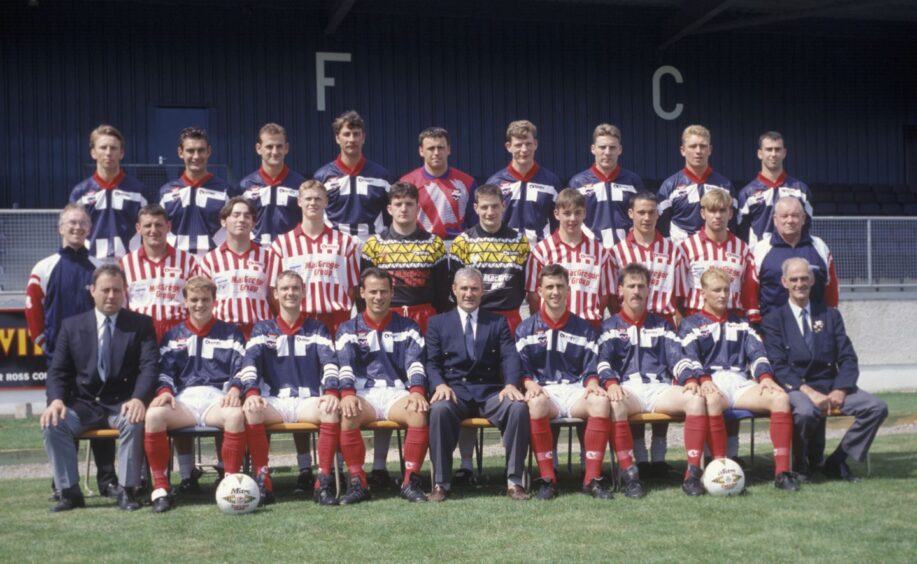
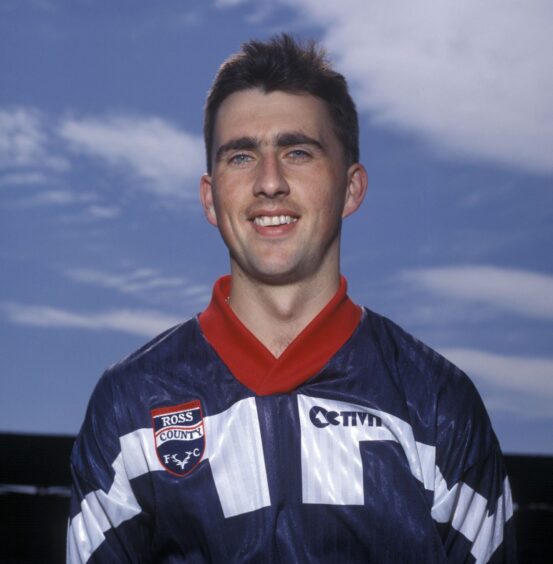
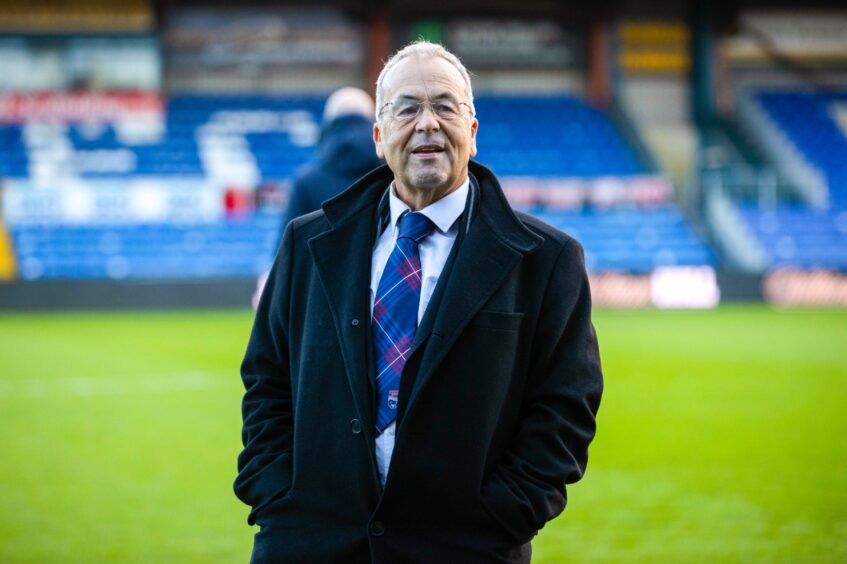

Conversation